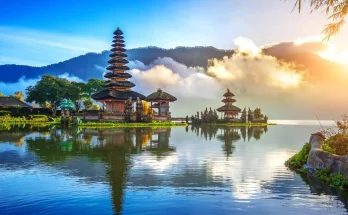ndia, often referred to as the world’s largest democracy, is a vibrant and dynamic nation that boasts a rich history of political evolution and a diverse tapestry of political ideologies. With a population of over 1.3 billion people, India’s democracy is a colossal experiment in governance, encompassing a complex web of political parties, regional diversity, and socio-economic disparities. In this 4000-word exploration, we will delve into the intricacies of Indian politics, from its historical roots to its contemporary challenges and achievements.
Introduction
Indian democracy is a grand spectacle, a colorful mosaic of political ideologies, parties, and citizens. It has been a beacon of hope for countries aspiring to establish democratic systems. In this comprehensive examination, we will navigate through the labyrinthine world of Indian politics, dissecting its historical foundations, the emergence of political parties, the electoral process, governance, and the ever-evolving role of democracy in shaping the nation.
Historical Foundations
To understand the complexities of Indian democracy, one must look back at its historical foundations. India’s political evolution can be traced through different eras, each contributing to the unique character of the country’s democratic journey.
Ancient Roots: Republics and Kingdoms
India’s democratic traditions have ancient roots dating back to republics and kingdoms. Historical texts mention republics like Vaishali and Magadha, where citizens participated in decision-making processes. These early democratic principles laid the groundwork for future governance.
Colonial Rule: Seeds of Democracy
The British colonial era played a pivotal role in shaping modern Indian democracy. The struggle for independence, led by figures like Mahatma Gandhi and Jawaharlal Nehru, instilled a deep yearning for self-rule among Indians. The Indian National Congress, founded in 1885, became a prominent platform for political activism.
Birth of the Republic: Independence and the Constitution
India gained independence from British rule on August 15, 1947. The Constituent Assembly, led by Dr. B.R. Ambedkar, crafted the Constitution of India, which came into effect on January 26, 1950. This momentous occasion marked the birth of the Indian Republic, founded on principles of justice, liberty, equality, and fraternity.
The Multi-Party System: A Complex Political Landscape
India’s multi-party system is one of its defining features. Political parties, both national and regional, play a crucial role in shaping the nation’s governance. This section delves into the diverse political spectrum of India.
The Indian National Congress (INC): A Historical Giant
The INC, founded during the colonial era, played a central role in the freedom struggle and later became India’s dominant political force. This section explores the party’s journey, its contributions, and its changing fortunes in contemporary politics.
The Bhartiya Janata Party (BJP): Rise to Power
The BJP, founded in 1980, has risen to prominence as a major political force in India. Known for its Hindutva ideology and strong leadership, the party has had a significant impact on Indian politics.
Regional Parties: The Mosaic of Indian Politics
India’s political landscape is dotted with regional parties, each representing the unique interests and aspirations of their respective states. From the AIADMK in Tamil Nadu to the TMC in West Bengal, this section explores the influence of regional parties on national politics.
Coalition Politics: The Art of Alliance-Building
The fragmentation of Indian politics often leads to coalition governments at the national level. This section examines the intricacies of coalition politics, the challenges of consensus-building, and the role of smaller parties in shaping policies.
The Electoral Process: The World’s Largest Democracy in Action
India’s electoral process is a massive undertaking, with millions of voters participating in the democratic exercise. From voter registration to polling stations and electronic voting machines (EVMs), this section provides an in-depth look at how elections are conducted in India.
General Elections: The Power to Choose
India’s general elections, held every five years, are the largest democratic exercise in the world. This section discusses the importance of these elections, the role of the Election Commission, and the process of candidate selection.
State Elections: The Regional Pulse
In addition to general elections, India conducts state elections to choose representatives for state legislatures. These elections are crucial in determining the governance of individual states and territories.
Governance and Challenges
Indian democracy faces a multitude of challenges, ranging from corruption and bureaucracy to socio-economic disparities and regional conflicts. This section explores the issues that have shaped India’s governance landscape.
Corruption and Transparency: The Fight for Accountability
Corruption has been a persistent issue in Indian politics. We’ll examine the efforts to combat corruption, including the establishment of institutions like the Lokpal and the role of civil society.
Socio-economic Disparities: The Divide Within
India’s socio-economic disparities are stark. This section discusses the challenges posed by poverty, inequality, and access to basic amenities, as well as government initiatives to address these issues.
Federalism and Regional Conflicts: Balancing Act
India’s federal structure and linguistic diversity often lead to regional conflicts. We’ll explore the delicate balance between states’ autonomy and the central government’s authority.
Foreign Policy: India on the Global Stage
India’s foreign policy decisions have a significant impact on its relationships with neighboring countries and the international community. This section discusses India’s foreign policy goals and diplomatic challenges.
The Future of Indian Democracy
As India continues to evolve in the 21st century, its democracy faces both opportunities and challenges. This section offers insights into the potential directions Indian democracy may take in the coming years.
Technological Advancements: The Digital Democracy
The role of technology in Indian democracy is expanding rapidly. We’ll explore how digital tools, social media, and data analytics are shaping political campaigns, governance, and citizen engagement.
Youth and Participation: The New Voices
India’s youth population is a formidable force. We’ll discuss the increasing political participation of young Indians and their potential to drive change.
Environmental Challenges: Sustainability and Governance
Environmental issues are becoming increasingly important in Indian politics. This section examines how India is addressing challenges like climate change, pollution, and conservation.
Conclusion
Indian democracy is a testament to the resilience and determination of its people. It has weathered challenges, celebrated victories, and continuously evolved to meet the aspirations of a diverse and dynamic nation. As the world’s largest democracy, India’s political journey is a source of inspiration and a subject of study for democracies worldwide.
we’ve covered a wide spectrum of topics related to Indian politics. Yet, the complexities of Indian democracy are boundless, and the story continues to unfold. As India stands at the crossroads of the 21st century, its democratic experiment remains a beacon of hope, offering valuable lessons on the power of diversity, dialogue, and collective action in shaping a nation’s destiny.




